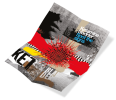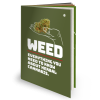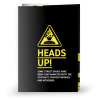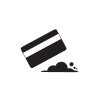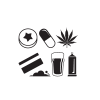Snorting and Swallowing Drugs: Ketamine, MDMA, Cocaine
Find out what happens when drugs like ketamine, MDMA or cocaine are snorted or swallowed. Does one method work faster or feel stronger? Are drugs made for snorting still effective if swallowed? Learn about the differences, the risks — and how to reduce them.
On this page
- Snorting drugs – how it works
- Swallowing drugs – how it works
- Additional questions about snorting and swallowing drugs
- Does ketamine work the same if you put it in a drink instead of snorting it?
- Why do people snort drugs?
Snorting drugs – how it works
When you snort drugs, they are absorbed through the lining of the nose into the bloodstream, then to the brain, where effects begin quickly.
The effects start quicker, are more intense and end sooner than swallowed drugs, with a harsher comedown.
Snorting constricts nose blood vessels, reducing oxygen and causing mucus production, felt as a throat drip and runny nose.
The more you snort, the more snot is produced — and the less of the drug gets absorbed. Snorting more often makes each line less effective.
The risks of snorting drugs
- Snorting stimulant-type drugs restricts blood flow inside the nose. Combined with the corrosive qualities of the drug or what it’s cut with, this can lead to nosebleeds and permanent damage.
- Damage and bleeding inside the nose make it easier to pass on viruses like hepatitis C, especially when sharing snorting tubes. A microscopic drop of blood — too small to see — is enough to infect someone.
- Some new or emerging drugs are particularly damaging to the nose because of the harsh chemicals used in their preparation.
- Small changes in dose can cause big differences in effect, making snorting riskier and harder to control.
Reduce the risks from snorting
- Flush your nose with water after each session or line to reduce damage from corrosive effects.
- Use a nasal spray or snort clean water from cupped hands, then blow your nose.
- Chop powder as fine as possible — this causes less damage and improves absorption.
- Never share snorting tubes or banknotes. Use your own tube or stick to a key or clean finger.
Swallowing drugs (bombing) – how it works
Swallowing is one of the simplest and oldest ways of taking drugs. The drug is absorbed through the stomach and small intestine into the bloodstream. It then passes through the liver, where some is filtered out, before reaching the brain.
Swallowing takes longer to kick in — effects may not be felt for 30 to 45 minutes, especially if you’ve eaten recently.
Powdered drugs are often wrapped in cigarette paper before being swallowed — a method called bombing or parachuting. Some people mix powder into hot drinks instead.
The risks of swallowing drugs
- If you don’t feel effects and take more too soon, there’s a risk of overdose.
- Stimulants can reduce blood flow to the gut, increasing the risk of ulcers or internal damage.
- Long-term use can affect the stomach, intestines, liver and kidneys. If you have liver problems, swallowing drugs can be especially risky.
Reduce the risks from swallowing
- Start with a low dose and wait. Don’t take more just because effects are delayed — drugs can vary in strength or be mixed with other substances.
- Eat something beforehand to reduce stomach irritation.
- Liquids like GBL should always be diluted before use — and some, like poppers, should never be swallowed at all.
Additional questions about snorting and swallowing drugs
The information above is from our snorting and swallowing drugs resource. It includes everything people need to know to reduce harm. The additional details below are based on common questions from service users and popular searches on our website, offering a deeper look at snorting and swallowing drugs.
Does ketamine work the same if you put it in a drink instead of snorting it?
Taking ketamine by mouth works differently than snorting it:
How it affects you:- Slower to kick in
- Generally less intense experience
- Still causes bladder damage — same as snorting
- Crush into a fine powder for better absorption
- Wrap in paper (bombing) or mix into a non-alcoholic drink
- Mark your drink clearly so no one else takes it by mistake
- Start low and wait at least 2 hours before re-dosing
- Never leave your drink unattended
- Don’t drink from unmarked containers
- Mixing with alcohol increases all risks
Why do people snort drugs?
- Faster effects: Snorting bypasses the stomach, delivering drugs straight into the bloodstream via the nose lining. Effects are usually felt in minutes.
- Dose control: People can take smaller amounts gradually and stop if needed. Swallowing commits you to the full dose at once.
- Stronger absorption: Less of the drug is broken down in the stomach and liver, meaning more reaches the brain.
- Less nausea: Some avoid swallowing drugs because of stomach sensitivity or nausea.

